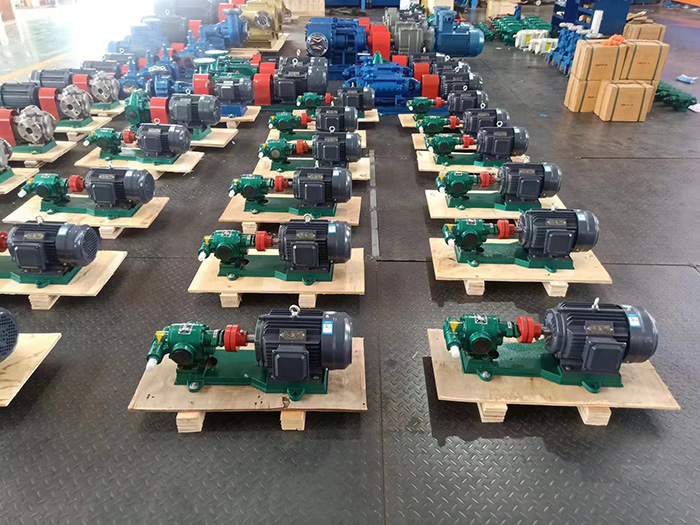Gear pumps are widely used in various industries for their efficient and reliable performance. Understanding the more information of gear pumps is essential for anyone considering their implementation in their operations. In this article, we will provide a comprehensive overview of gear pumps.
The Using Process of Gear Pump:
Gear pumps operate based on the principle of positive displacement. They consist of two meshing gears, typically referred to as the drive gear and the driven gear. These gears rotate in opposite directions, creating a sealed chamber between their teeth and the pump housing.
As the gears rotate, the fluid enters the pump through the inlet port and fills the space between the gear teeth. The rotation of the gears then carries the fluid around the pump's housing, gradually reducing the chamber volume and forcing the fluid out through the outlet port. This process ensures a continuous and steady flow of fluid.
Gear pumps are known for their ability to generate high pressure and maintain a constant flow rate. They are self-priming, meaning they can draw fluid into the pump even when the inlet is above the pump's level. Additionally, gear pumps can handle a wide range of viscosities, making them suitable for both thin and thick fluids.
The Using Range of Gear Pump:
Chemical Industry: Gear pumps are widely used in the chemical industry to handle various chemicals, including corrosive and abrasive substances. Their ability to handle high pressures and maintain a consistent flow makes them ideal for transferring chemicals in manufacturing processes.
Oil and Gas Industry: Gear pumps play a crucial role in the oil and gas industry, such as fuel transfer, lubrication, and hydraulic systems. They are capable of handling different types of oils, fuels, and lubricants, making them essential in maintaining the smooth operation of machinery and equipment.
Food and Beverage Industry: Gear pumps are used in the food and beverage industry for transferring viscous fluids such as syrups, chocolate, and sauces. Their gentle pumping action ensures that delicate food products are not damaged during the transfer process.
Automotive Industry: Gear pumps are utilized in automotive for tasks such as engine lubrication, transmission fluid circulation, and fuel transfer. They provide reliable and consistent fluid flow, contributing to the efficient operation of vehicles.
Pharmaceutical Industry: Gear pumps are employed in the pharmaceutical industry for the transfer of various liquids, including medications, solvents, and suspensions. Their sanitary design and ability to handle different viscosities make them suitable for pharmaceutical processes.
Agriculture and Irrigation: Gear pumps are used in agricultural for tasks such as fertilizer spraying, pesticide and irrigation. Their ability to handle different types of fluids and generate high pressures makes them valuable for efficient agricultural practices.
Their positive displacement principle, ability to handle high pressures, and compatibility with different viscosities make them suitable for various fluid transfer tasks. Whether it's in the chemical industry, oil and gas sector, food and beverage production, automotive, pharmaceutical processes, or agricultural practices, gear pumps play a vital role in ensuring smooth and efficient operations.
